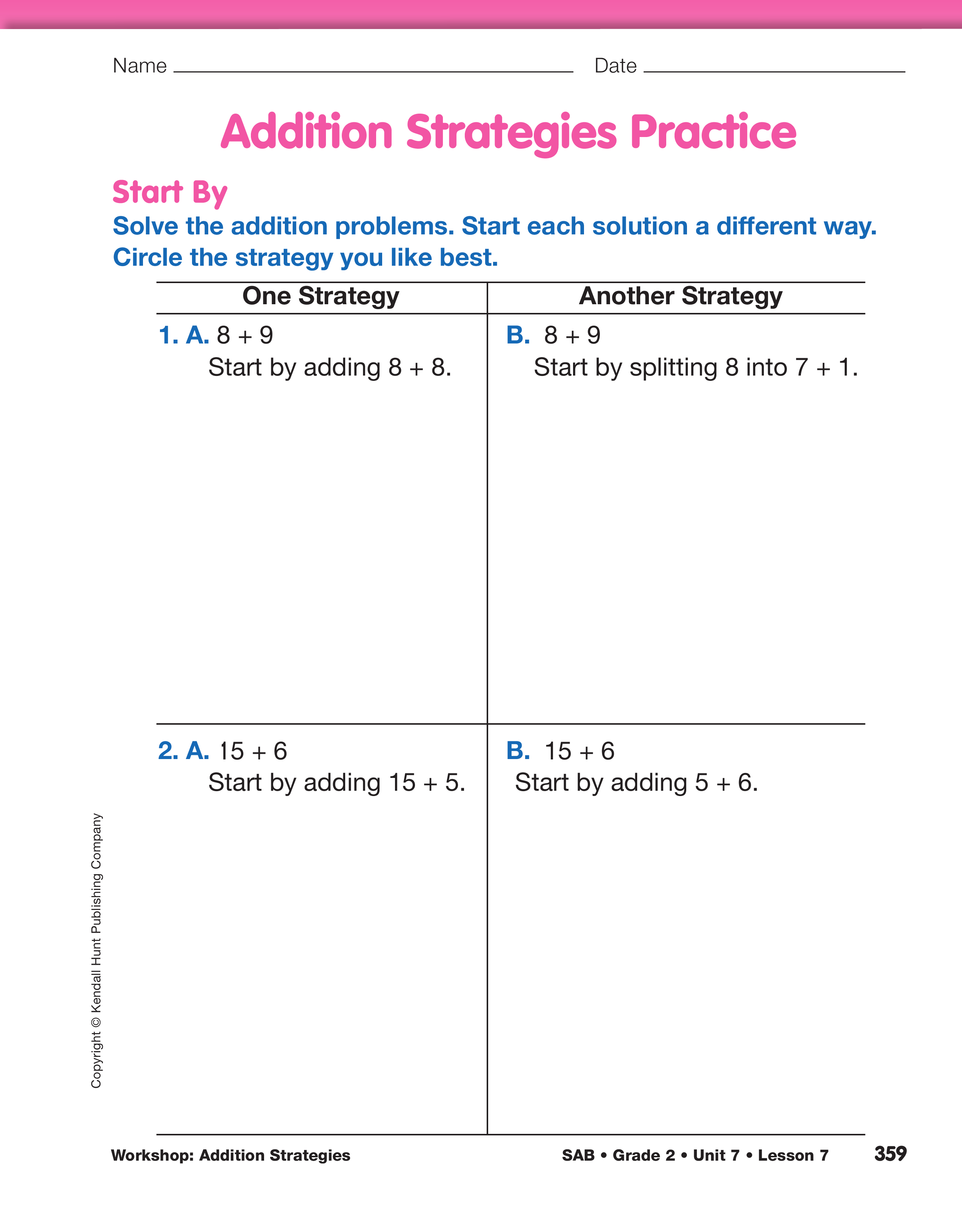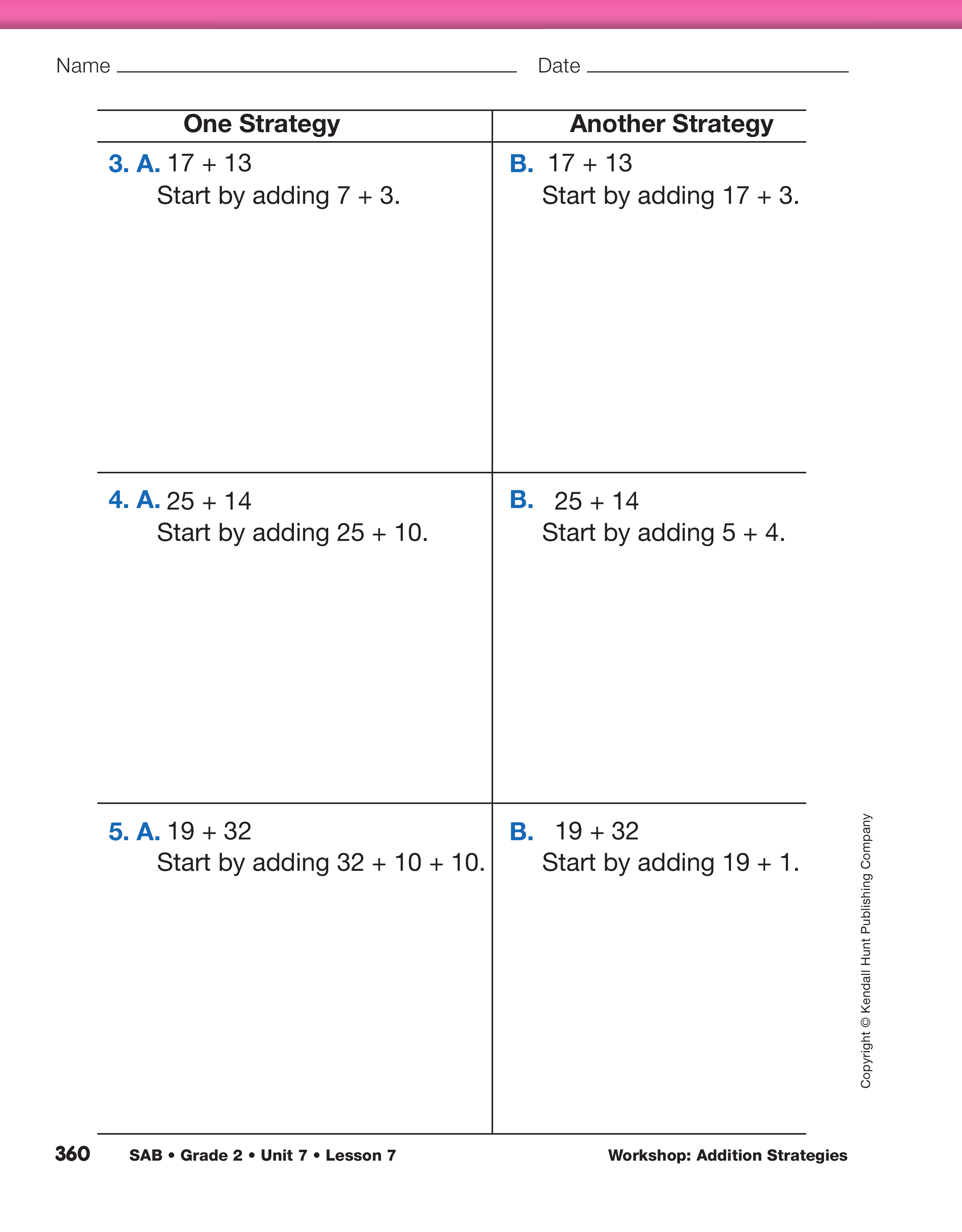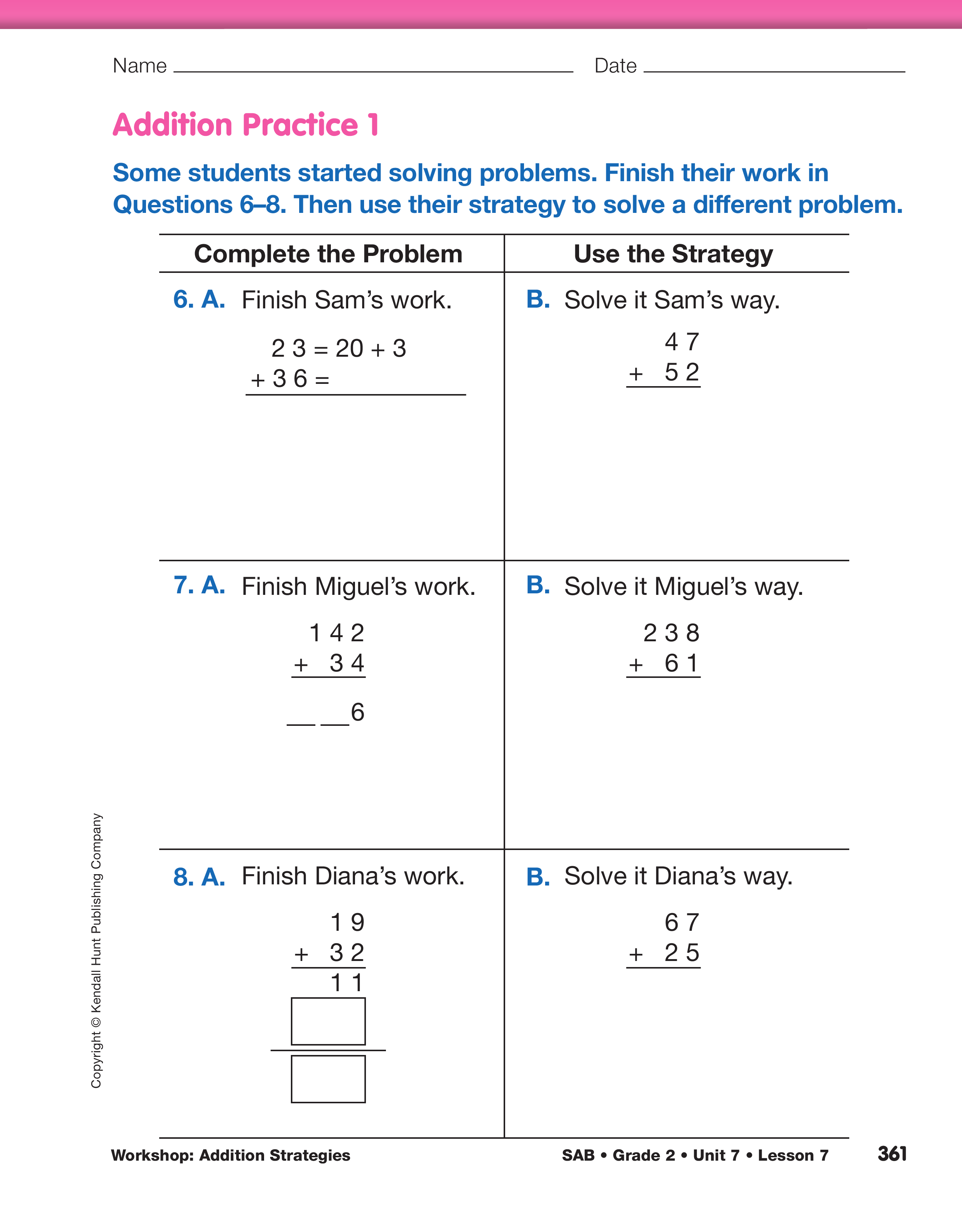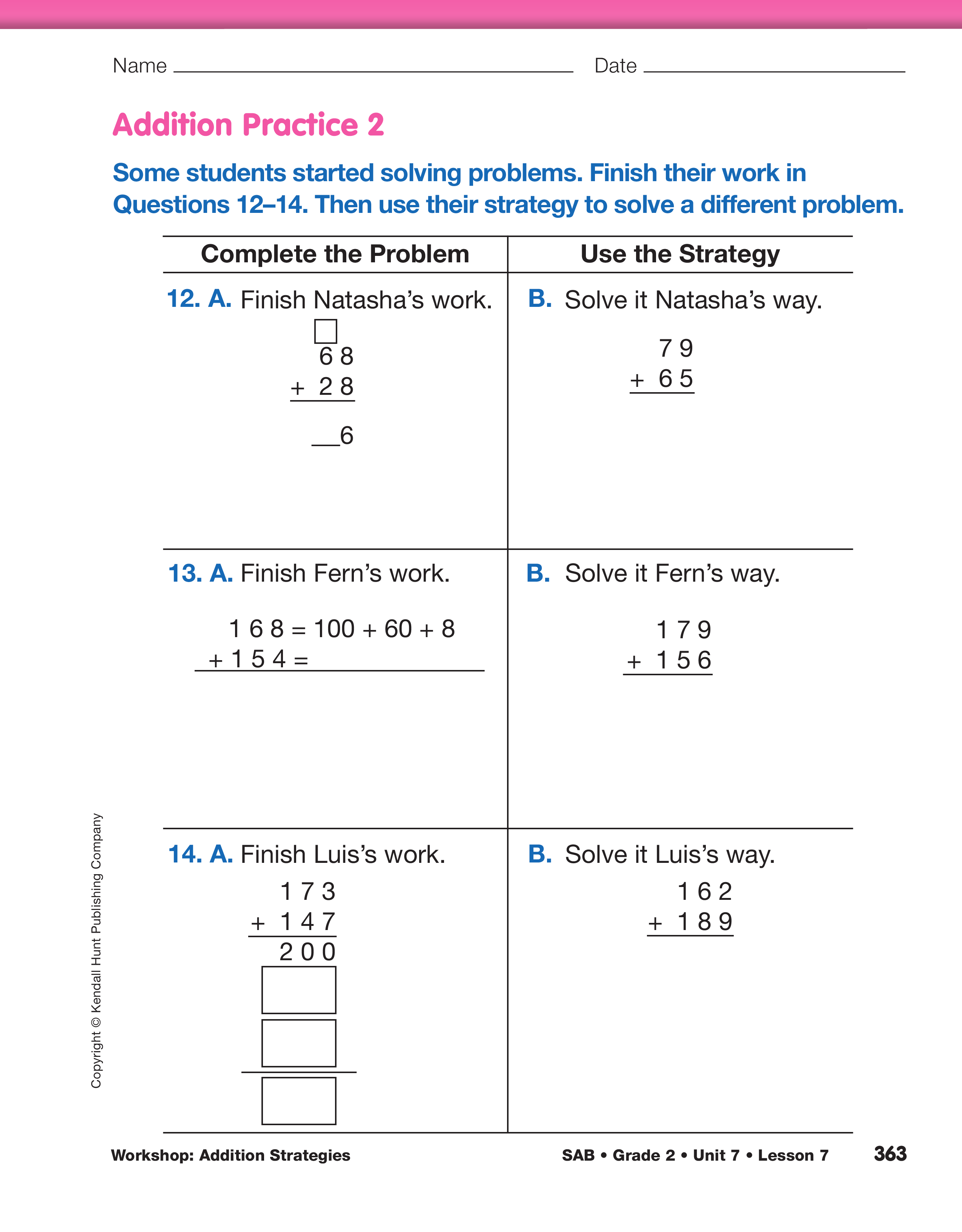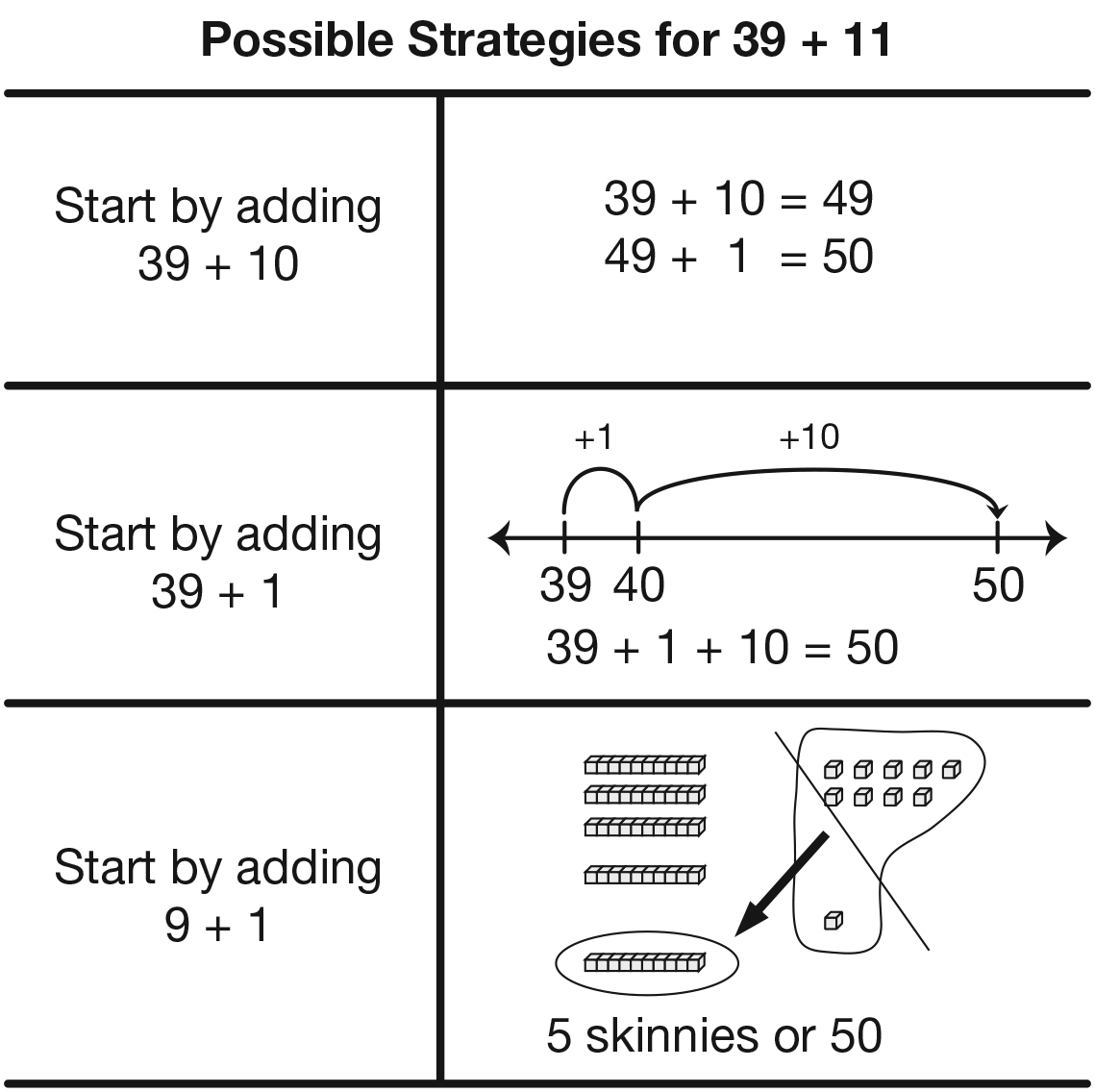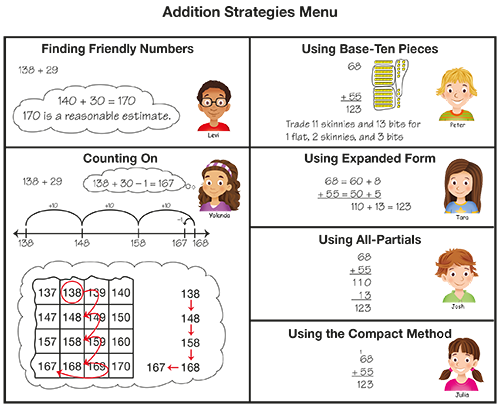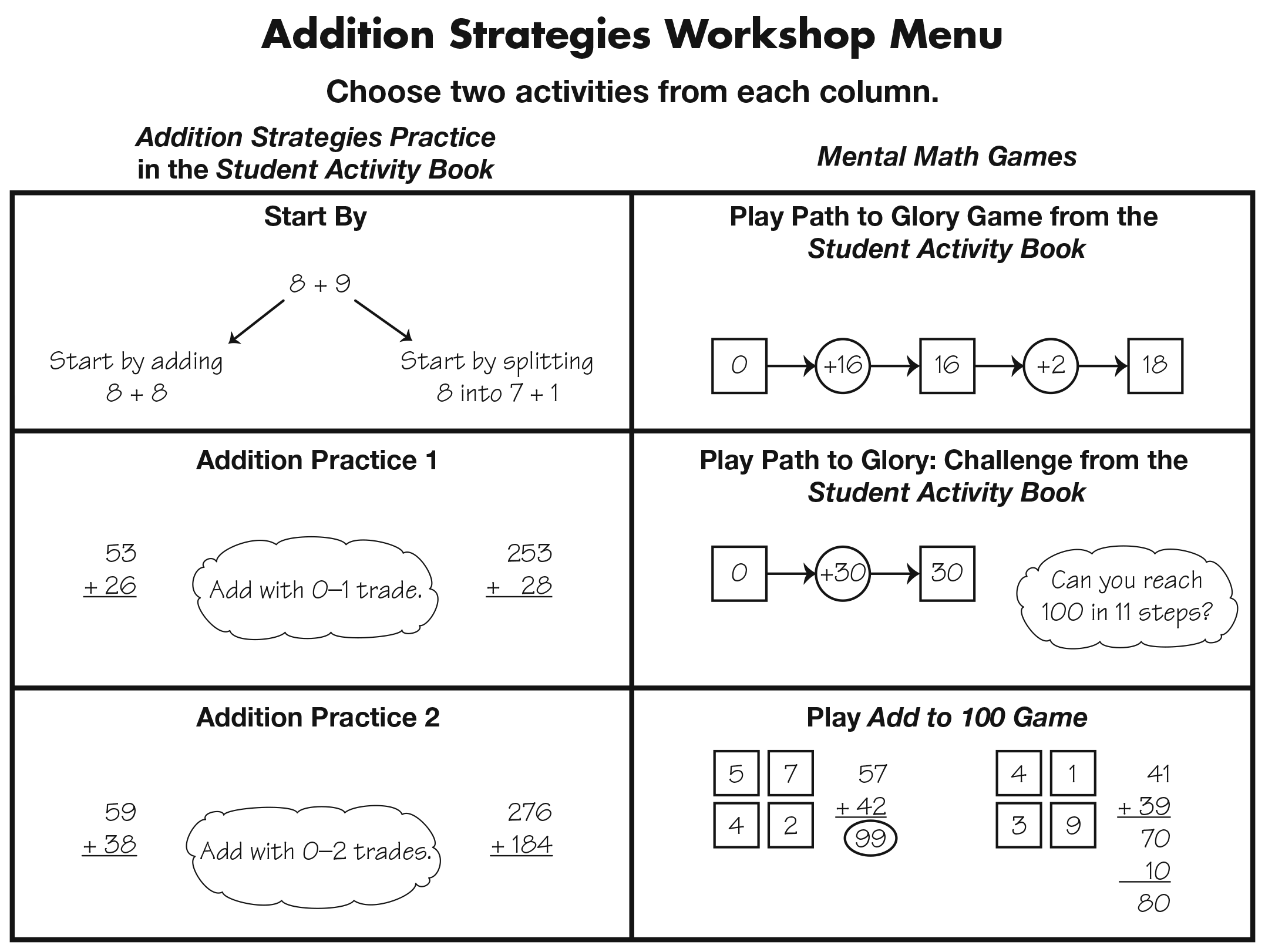Workshop: Addition Strategies
Est. Class Sessions: 2–3Developing the Lesson
Part 1: Addition Strategies Practice
Explore a Variety of Strategies. Display the problem 39 + 11 and ask students to first estimate the sum. Review that estimation is a way of finding reasonable, close answers and a way of predicting or checking answers to computation problems. Students may round using benchmarks, use friendly numbers, compose and decompose numbers, or count on.
Then ask students to solve the problem. Encourage them to use number lines, base-ten pieces, or the 200 Chart.
Ask:
Remind students that there are ways other than using paper and pencil to add. The compact method is not the end point for all problems. While it is certainly a useful and important strategy, it is not the only way to solve a problem. Sometimes a paper-and-pencil method is not the quickest or most efficient way to solve a problem. To emphasize this point, ask the students to solve this same problem by starting several different ways:
- Start by adding 39 + 10.
- Start by adding 39 + 1.
- Start by adding 9 + 1.
Have students share how they finished each of these strategies. See Figure 1 for possible solutions. Even after students have developed proficiency with paper-and-pencil algorithms, these other methods are helpful for mental arithmetic and estimation.
Discuss Efficiency of Strategies. At this point, students do not have enough experience to choose the most efficient strategy for a given problem. However, it is important for them to begin comparing strategies. See Content Note and Sample Dialog.
Ask:
Students may not be motivated to seek a more efficient strategy at first because they are confident with a less efficient strategy. This exercise will start students thinking that some strategies are better than others for some problems. Remind students that an efficient strategy:
- reaches the correct answer
- fits the problem
- can be done in fewer steps
- can be done quickly
- is easy to understand
Review Addition Strategies Menu. Explain that this Workshop gives students the opportunity to practice many different addition strategies. Display Addition Strategies Menu from the Student Activity Book Reference section and ask students to look at their version from Lesson 6.
Ask:
Tell students that as they become proficient with more strategies, they will have a greater collection with which to solve a variety of problems.
Introduce Addition Strategies Workshop Menu and Choices. Display the Addition Strategies Workshop Menu from the Student Activity Book. See Figure 3. Explain to students that they will use this menu to help them choose addition practice. The practice listed in the first column focuses on using addition strategies. The second column focuses on using mental math strategies. In the first part of the Workshop, students will consider the activities from the first column.
Provide an overview of students´ practice choices. All of the activities require students to solve the same problem two ways. This expands students´ proficiency with a variety of strategies and encourages them to consider the efficiency of strategies. It also encourages students to compare strategies, check for reasonableness, and check for and correct mistakes.
Direct students´ attention to the Start By section of the Addition Strategies Practice pages in the Student Activity Book. The problems on these pages are similar to the opening activity. If students choose this practice, they will solve each problem two ways. They will need to show how they finish each problem and circle the strategy they like better.
Students may choose to solve problems from the Addition Practice 1 or Addition Practice 2 sections of the Addition Strategies Practice pages. The problems in the Addition Practice 1 section provide practice with adding 2- and 3-digit numbers and making one or two trades. The Addition Practice 2 section involves adding 2- and 3-digit numbers with multiple trades and is more challenging. Suggest that students try to solve the sample problems given on the menu to help them determine their confidence levels with these skills when choosing between the two. Some students may choose to do both sections. (Minis not shown here are in the Answer Key.)
Other questions to ask:
Practice Using Addition Strategies. Tell students to remove the Addition Strategies Workshop Menu page from the Student Activity Book. See Figure 3. Review the activities in the first column of the menu. Then, ask each student to choose and circle two activities from the first column. Encourage students to refer to the Addition Strategies Menu in the Student Activity Book Reference section as they work, and to use tools as needed such as the 200 Chart, number lines, and base-ten pieces. As they begin working, circulate and monitor student choices.
At the end of the class session, students who need more practice can continue working on the problems from the Addition Strategies Practice pages the next day. Alternatively, unfinished problems from the Start By, Addition Practice 1, or Addition Practice 2 sections of these pages can be assigned as homework. Have students save their Addition Strategies Workshop Menu for the second session of the Workshop.


















